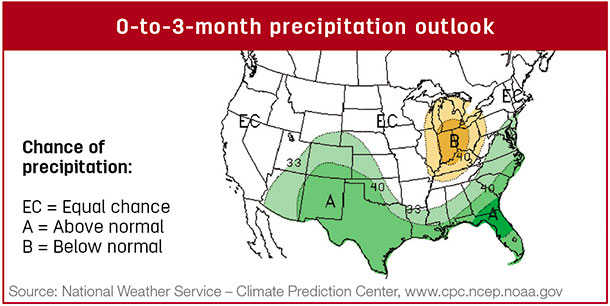Is your main focus to sell stocker or feeder cattle? Do you plan to retain ownership through the feedlot and slaughter? Are you producing replacement heifers to retain in your herd or for sale? Answering these questions can help determine which breed or breed type of bull would be best for your operation.
The next steps are to identify ranches that produce the type of bulls you are looking for and determine a budget for your purchases. After these steps are completed, it is time to start evaluating bulls based on expected progeny differences (EPDs), individual performance data, visual appraisal, disposition and any other criteria important to your operation. When comparing between ranches, focus on EPDs instead of individual performance data.
 Regardless of your marketing plan and operation goals, it is critical to evaluate all bulls for scrotal circumference, calving ease, birthweight, structural soundness and disposition. If you can’t get cows pregnant and live calves on the ground, then how high the bull ranked for yearling weight, marbling or some other trait doesn’t matter.
Regardless of your marketing plan and operation goals, it is critical to evaluate all bulls for scrotal circumference, calving ease, birthweight, structural soundness and disposition. If you can’t get cows pregnant and live calves on the ground, then how high the bull ranked for yearling weight, marbling or some other trait doesn’t matter.
Scrotal circumference is correlated with semen quality and semen production. All bulls, except straight Brahman bulls, should be at least 32 centimeters at a year old and preferably 34 centimeters or bigger.
The amount of calving ease needed will depend on what breeds are involved and whether the bulls will be used to breed cows or heifers. Although some folks like to just look at calving ease EPDs, it can be beneficial to look at birthweight EPDs and actual birthweights as well. Calf birthweight can get too small or too big. The target for each ranch may vary some, but having heifers give birth to calves weighing 60 to 75 pounds and cows giving birth to calves weighing 60 to 85 pounds is generally a good target.
In some situations, bull buyers are provided with a tremendous amount of information. It is important to not get overwhelmed by all the information and focus on the three to five traits most important to your operation. ![]()

-
Jason Banta
- Associate Professor and Extension Beef Cattle Specialist
- Texas A&M University
- Email Jason Banta







